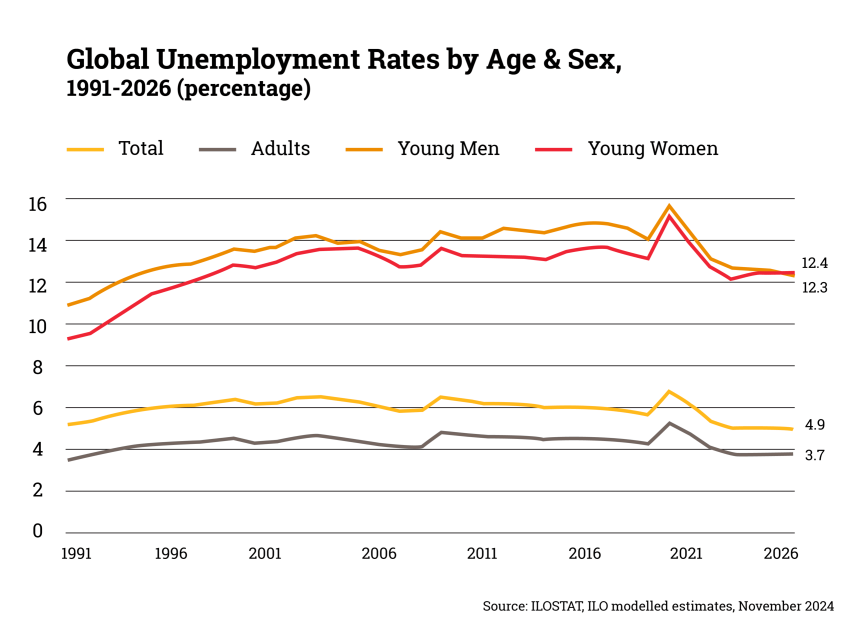Mike Dolan’s recent article, “Worker shortages may define the 2025 economy,” highlights worker shortages as a pressing issue that may define the global economic landscape in 2025. Despite ongoing discussions about trade, debt, and inflation, labor scarcity could be the most significant trend impacting the U.S. and Europe.
Understanding the Impact of Worker Shortages
Morgan Stanley has projected that the deportation of up to 1 million undocumented migrants could decrease U.S. population growth from 1.2% to 1.0% or less. The potential reduction in the workforce could result in labor shortages, particularly in industries that rely heavily on migrant labor.
Historically, migration has been a key driver of job creation without triggering substantial inflation. Migrants often take hard-to-fill jobs, meeting labor demand without pushing wages up. With possible policy changes, labor shortages could increase costs and disrupt supply chains, impacting prices and economic stability.
Expanding the availability of work visas for skilled migrants can help ensure the continued success of essential industries and boost economic growth. While this increase can resolve some immediate effects of deportation, policymakers must think long-term and develop sustainable immigration policies.
Economic Implications
The potential economic implications of mass deportation are significant, as highlighted by Schroders economists. They estimate that the policy could lead to an increase in inflation by three percentage points. This inflationary pressure would arise from a sudden reduction in the workforce, leading to decreased productivity and higher wages as businesses fill positions. The resulting supply shock could also hinder potential GDP growth, reducing it from over 2% to 1.5%.
In addition to these economic pressures, the financial markets could also face turbulence. Invesco has warned of potential stock market downturns if mass deportations lead to a stagflationary environment characterized by stagnant economic growth, high unemployment, and rising inflation. Investors may become more risk-averse, seeking safer assets and pulling back from equities, which could heighten the downturn and create a challenging environment for economic recovery.

Labor Market Conditions
The International Labour Organization, a specialized agency of the United Nations that focuses on labor issues, reports a global unemployment rate at a historic low of 5% last year, with projections indicating the same for 2025 and decreasing to 4.9% by 2026. The forecast reflects positive employment trends across various regions, driven by factors such as technological advancements, increased investments in infrastructure and industries, and policies promoting economic growth.
The ILO’s report is an essential indicator for policymakers, economists, and businesses as they plan for the future. It underscores the need for continued efforts to support job creation, skills development, and equitable economic opportunities to ensure that low unemployment benefits are widely shared.

Despite these positive trends, small businesses are grappling with significant worker shortages, especially in the transportation, construction, and manufacturing sectors. These industries are crucial to sustaining economic growth and infrastructure development, yet they face challenges in attracting and retaining skilled workers.
In Europe, a possible ceasefire between Ukraine and Russia might encourage Ukrainian refugees to return home. This repatriation could relieve some of the pressure on Central European countries that experienced a large influx of refugees. Since 2022, over 4.3 million Ukrainians have fled the country, with more than 1 million settling in Germany. However, the return of these refugees could also lead to a tightening of the labor market in these countries, particularly in sectors where refugees have been filling labor shortages.
ShiftSwap™: Addressing Labor Market Challenges
The ShiftSwap platform is designed to improve workforce management by offering several benefits to both employers and employees navigating a changing economic environment. The platform enhances workforce flexibility by allowing employees to easily post shifts for coverage, which helps organizations continue operations even during labor shortages. Furthermore, by promoting work-life balance, ShiftSwap contributes to higher job satisfaction and lower turnover rates.
ShiftSwap simplifies shift management for small businesses, enabling them to concentrate on growth and maintain smooth operations. The ability to swiftly adapt to changes in workforce availability minimizes potential disruptions.
Preparing for the Future
While the economic implications of worker shortages and immigration policies are complex, leveraging solution-oriented platforms like ShiftSwap can be part of the strategy to overcome these hurdles. By prioritizing flexibility, employee satisfaction, and efficient workforce management, organizations can address labor shortages and contribute to economic stability.
In 2025, businesses that utilize such tools may be better prepared to succeed in a changing labor market. Don’t miss the opportunity to see how Shiftswap can be an asset to your organization and sign up for a quick 30-minute demo!
